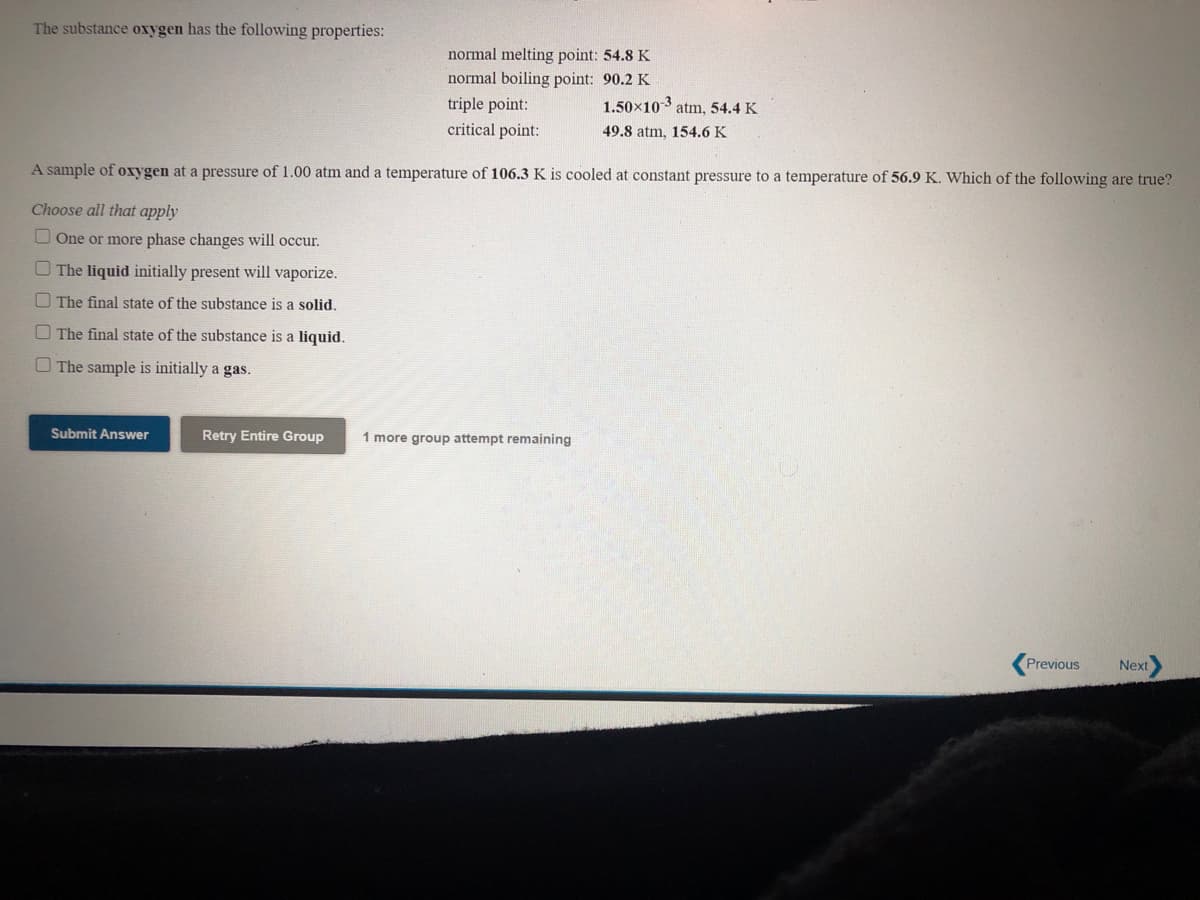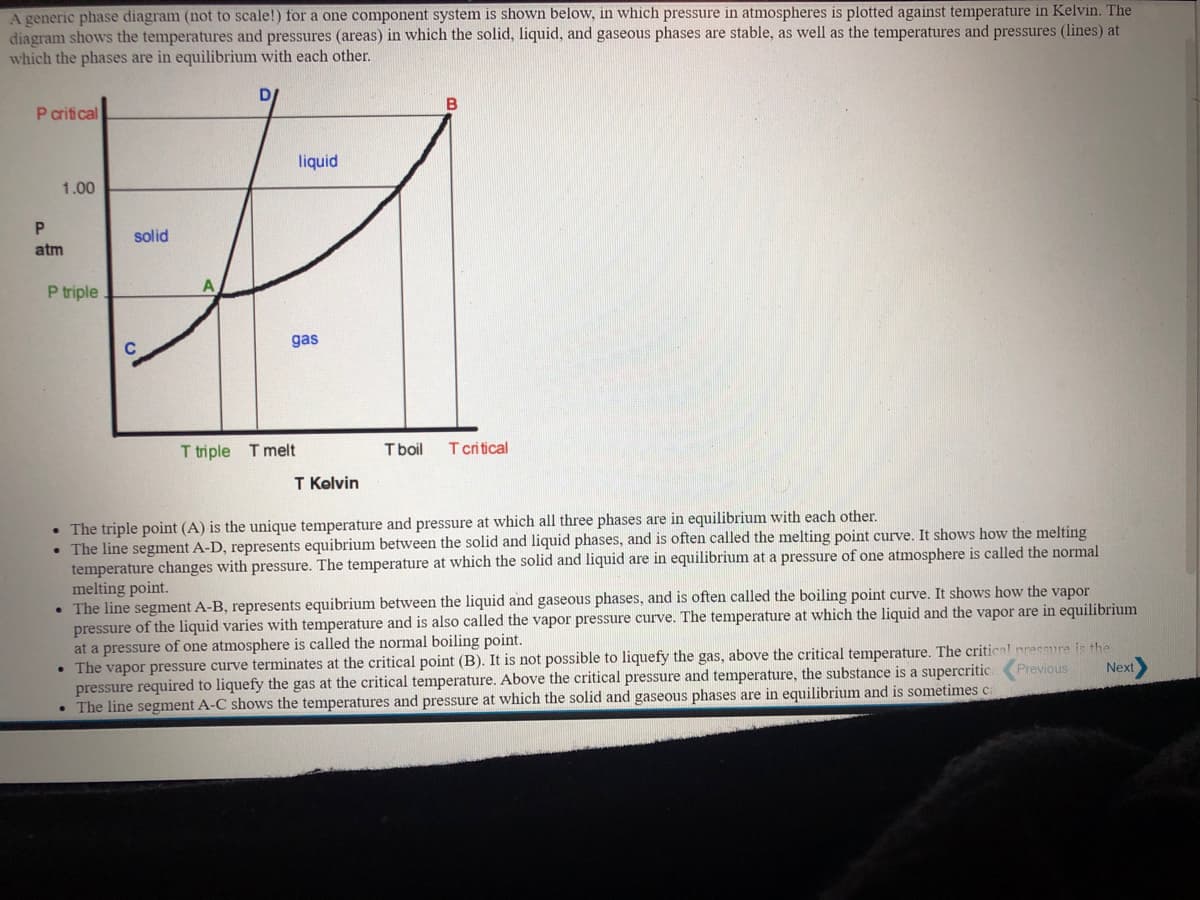The substance oxygen has the following properties: normal melting point: 54.8 K normal boiling point: 90.2 K 1.50x103 atm, 54.4 K triple point: critical point: 49.8 atm, 154.6 K A sample of oxygen at a pressure of 1.00 atm and a temperature of 106.3 K is cooled at constant pressure to a temperature of 56.9 K. Which of the following are true? Choose all that apply O One or more phase changes will occur. O The liquid initially present will vaporize. O The final state of the substance is a solid. O The final state of the substance is a liquid. O The sample is initially a gas.
Ionic Equilibrium
Chemical equilibrium and ionic equilibrium are two major concepts in chemistry. Ionic equilibrium deals with the equilibrium involved in an ionization process while chemical equilibrium deals with the equilibrium during a chemical change. Ionic equilibrium is established between the ions and unionized species in a system. Understanding the concept of ionic equilibrium is very important to answer the questions related to certain chemical reactions in chemistry.
Arrhenius Acid
Arrhenius acid act as a good electrolyte as it dissociates to its respective ions in the aqueous solutions. Keeping it similar to the general acid properties, Arrhenius acid also neutralizes bases and turns litmus paper into red.
Bronsted Lowry Base In Inorganic Chemistry
Bronsted-Lowry base in inorganic chemistry is any chemical substance that can accept a proton from the other chemical substance it is reacting with.


Trending now
This is a popular solution!
Step by step
Solved in 2 steps







